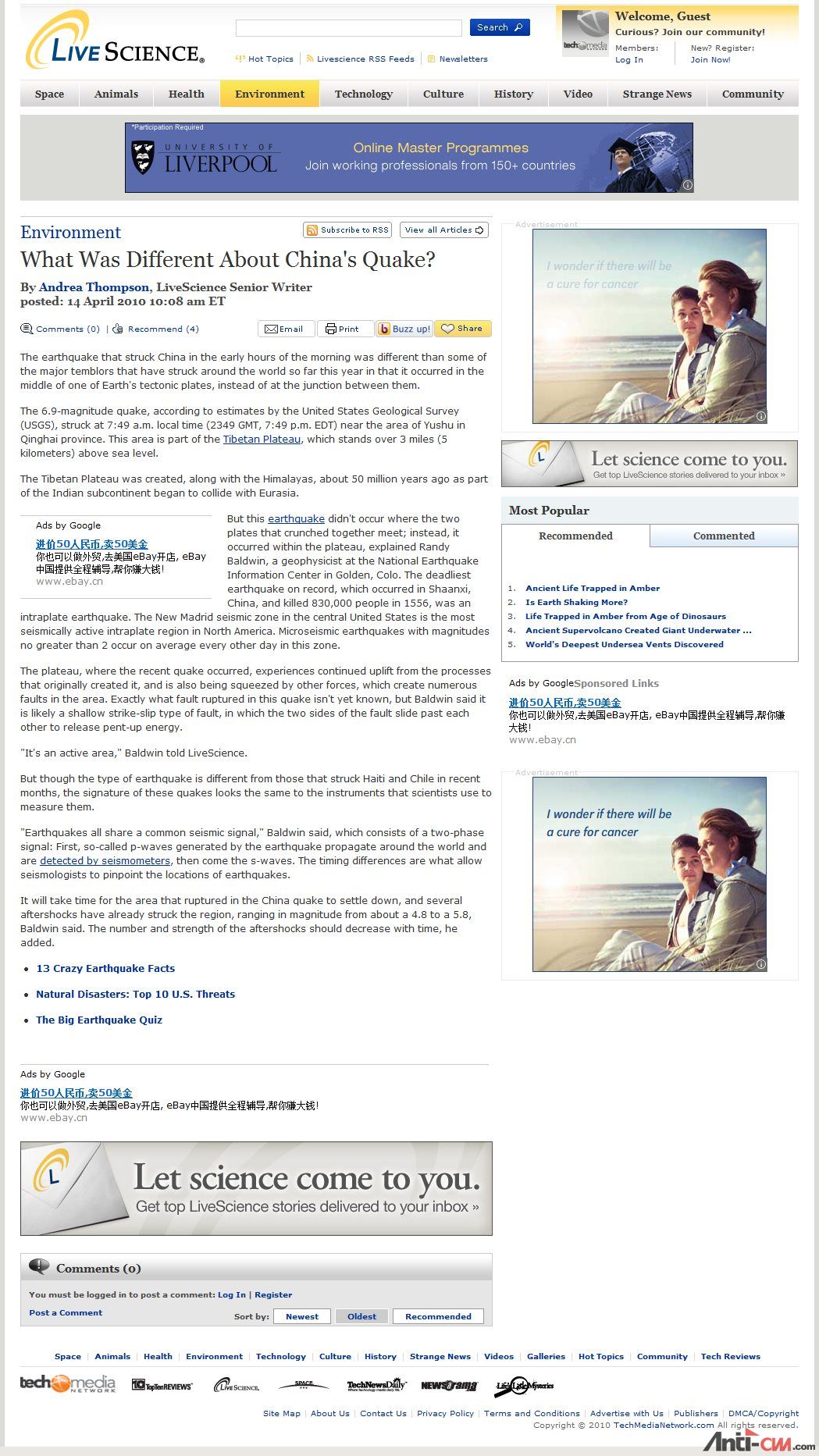|
|
http://www.livescience.com/envir ... plateau-100414.html
By Andrea Thompson, LiveScience Senior Writer
posted: 14 April 2010 10:08 am ET
The earthquake that struck China in the early hours of the morning was different than some of the major temblors that have struck around the world so far this year in that it occurred in the middle of one of Earth's tectonic plates, instead of at the junction between them.
The 6.9-magnitude quake, according to estimates by the United States Geological Survey (USGS), struck at 7:49 a.m. local time (2349 GMT, 7:49 p.m. EDT) near the area of Yushu in Qinghai province. This area is part of the Tibetan Plateau, which stands over 3 miles (5 kilometers) above sea level.
The Tibetan Plateau was created, along with the Himalayas, about 50 million years ago as part of the Indian subcontinent began to collide with Eurasia.
But this earthquake didn't occur where the two plates that crunched together meet; instead, it occurred within the plateau, explained Randy Baldwin, a geophysicist at the National Earthquake Information Center in Golden, Colo. The deadliest earthquake on record, which occurred in Shaanxi, China, and killed 830,000 people in 1556, was an intraplate earthquake. The New Madrid seismic zone in the central United States is the most seismically active intraplate region in North America. Microseismic earthquakes with magnitudes no greater than 2 occur on average every other day in this zone.
The plateau, where the recent quake occurred, experiences continued uplift from the processes that originally created it, and is also being squeezed by other forces, which create numerous faults in the area. Exactly what fault ruptured in this quake isn't yet known, but Baldwin said it is likely a shallow strike-slip type of fault, in which the two sides of the fault slide past each other to release pent-up energy.
"It's an active area," Baldwin told LiveScience.
But though the type of earthquake is different from those that struck Haiti and Chile in recent months, the signature of these quakes looks the same to the instruments that scientists use to measure them.
"Earthquakes all share a common seismic signal," Baldwin said, which consists of a two-phase signal: First, so-called p-waves generated by the earthquake propagate around the world and are detected by seismometers, then come the s-waves. The timing differences are what allow seismologists to pinpoint the locations of earthquakes.
It will take time for the area that ruptured in the China quake to settle down, and several aftershocks have already struck the region, ranging in magnitude from about a 4.8 to a 5.8, Baldwin said. The number and strength of the aftershocks should decrease with time, he added.

|
About, different, LiveScience, Quake, Was, About, different, LiveScience, Quake, Was, About, different, LiveScience, Quake, Was
评分
-
1
查看全部评分
-
|